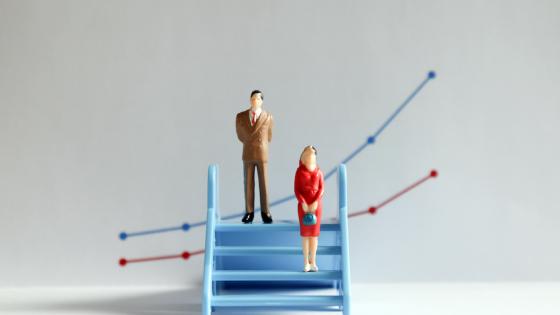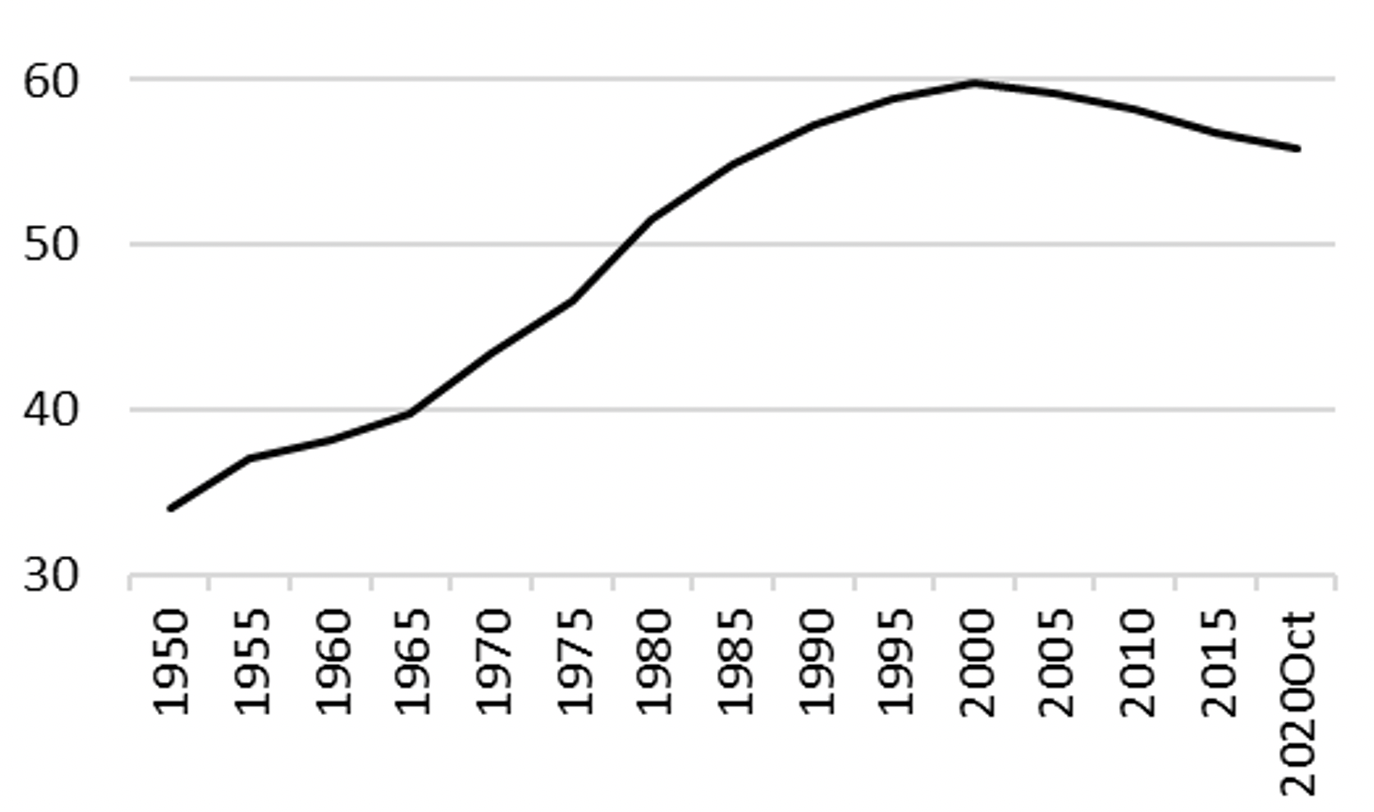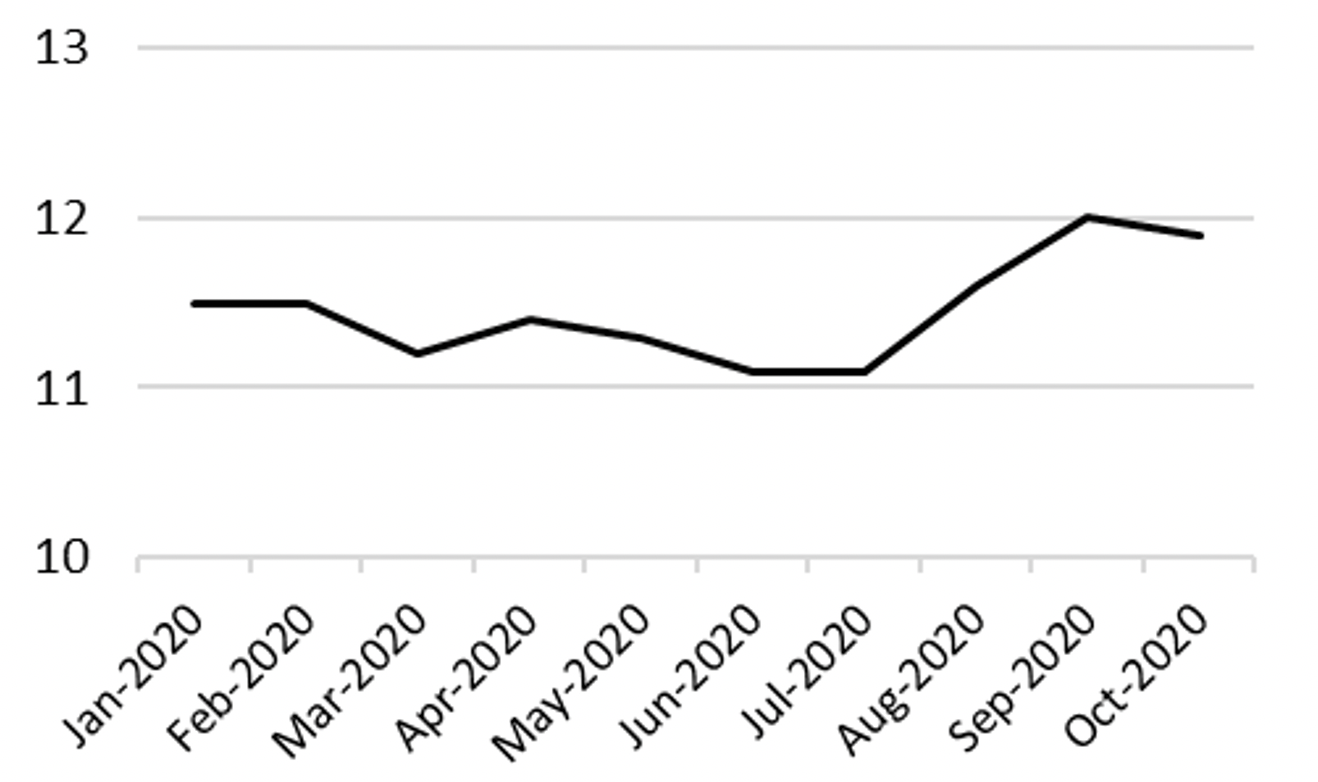By the beginning of 2020, women’s labour force participation in the US stood at 58%, nearly a three-fold increase in the past century (Figure 1, first panel). By October 2020, in the wake of Covid-19, this share had fallen by two percentage points. This statistic illustrates an expanding gender gap – the rebound in jobs for men was swift after the initial weeks of the Covid pandemic; not so for women (Figure 1, second panel).
Figure 1 Labour force participation rate in the US (seasonally adjusted)
a) Female labour force participation rate, 1950-2020 (%)
b) Gender gap in labour force participation rate, 2020 monthly (percentage points)
Source: Civilian labour force participation rate (16 years and over) from U.S. Bureau of Labor Statistics.
The expanding gender gap is first explained by the disproportionate impact Covid-19 has had on jobs and occupations that tend to employ more women. Many women work in sectors such as restaurants, tourism and office space maintenance, which were severely affected by the crisis. US employment losses through October were the largest in occupations requiring personal contact (e.g. retail), where women account for nearly three-quarters of employment.
Second, previous studies on the US labour markets show that working mothers were already shouldering the majority of family caregiving responsibilities (Goldin 2015). The disruptions to daycare centres, schools, and after-school programmes have been hard on all members of the family, but the empirical evidence since the Covid crisis started shows that working mothers are more frequently reducing their hours or leaving their jobs entirely in response.
In particular, studies show that women have absorbed over two-thirds of the additional responsibilities due to Covid-19 (Collins et al. 2020). The increase in childcare needs affects women more than men for several reasons. There are many more single mothers than single fathers: 21% of children in the US lived with a mother with no partner present in 2017, while 5% of children lived with a lone father. Among married households, mothers provide more than 60% of total childcare. Women provide the majority of childcare even in couples where both parents work full time. As a result, women have picked up the majority of the increased childcare needs during the crisis. Among parents working from home during the crisis, fathers have increased their time spent on childcare and home schooling by 4.7 hours per day, versus 6.1 hours for women.
The US economy will eventually bring back the majority of the jobs in those industries that employ women. One example of such an industry is healthcare, where women take nearly 80% of the jobs. However, Covid as a sectoral shock may cause the permanent loss or reallocation of a number of jobs, especially those in the retail sectors. Thus, employment uptake will take time to develop and will require new skills, which implies programmes for vocational training.
Three areas for change
Hyland et al. (2020) point to the first area of work that will alleviate the burden on working women in the US. Legal changes are needed, to both federal and state-level regulation, in order to improve the environment for the employment of women. A particular focus is necessary on parental leave legislation and pension rules, both of which at present significantly disadvantage women in the US relative to their peers in other advanced economies. Some legal change has already taken place at the state level – for example, both California and New York implemented new mandated maternity leave regulation for public employees in 2018 and 2019, respectively (World Bank 2020).
Second, the establishment of vocational training incentives with a particular focus on women is overdue. Workers in sectors that require personal contact – primarily women – continue to be exposed to the deleterious effects of the pandemic and the risk of permanent reallocatoin. Expanding the number of qualified employees for such sectors by giving financing incentives is a priority in the recovery pakages of several advanced economies, notably France and Germany.
Third, there should be measurement of the effects of the Covid crisis on responsibilities within the household. Previous studies show a disproportionate burden on women, especially in lower socioeconomic groups. Analysing in detail the additional unpaid work that women tender in the household gives a benchmark of the actual gender gap in hours worked and pay. The US government recovery programme for wage insurance that was in place between March and July 2020 made no differentiation in the pay for female and male employment losses. A follow-up programme may do well to take the actual gender pay gap into consideration.
There are two other implications from the Covid pandemic on the wellbeing of women, each of which affects the gender gap. The first is violence against women at home. Initial evidence suggests that the incidences of such violence have increased during the crisis. A second concern is the rising income inequality from women falling out of the labour force, and the implied social dimensions of this exclusion.
References
Collins, C, L Landivar, L, L Ruppanner and W Scarborough (2020), “COVID‐19 and the Gender Gap in Work Hours”, Gender Work Organ 6: 1–12.
Goldin, C (2015), “How to Achieve Gender Equality”, Milken Institute Review 3: 24-33.
Hyland, M, S Djankov and P Goldberg (2020), “Gendered Laws and Women in the Workforce”, American Economic Review Insights, forthcoming.
World Bank (2020), Women, Business and the Law 2020.






